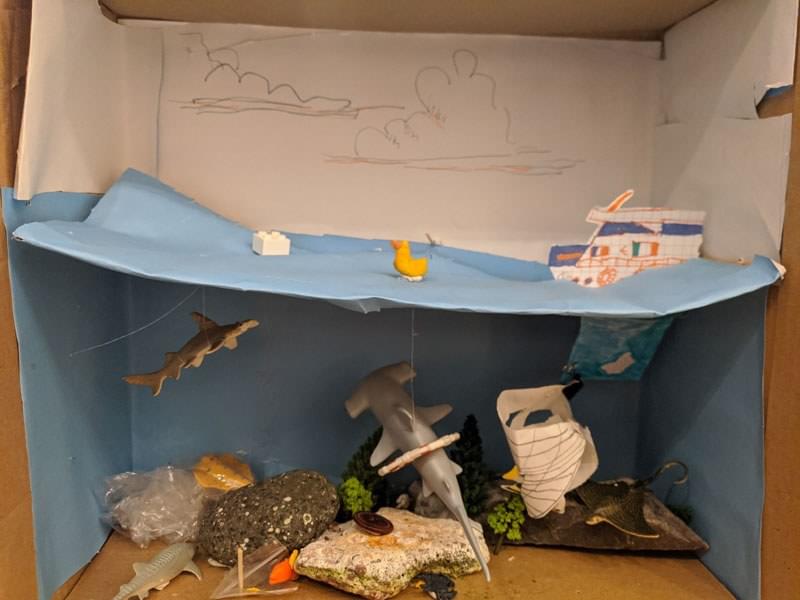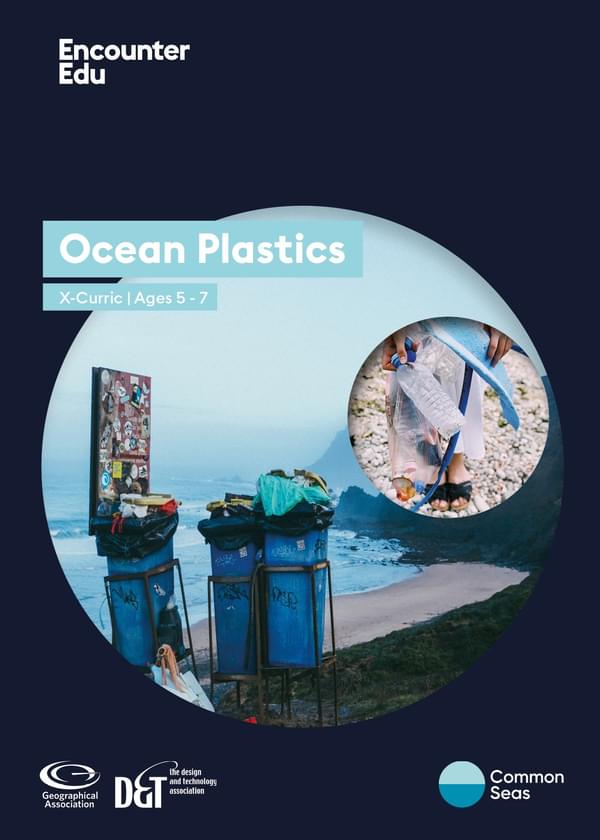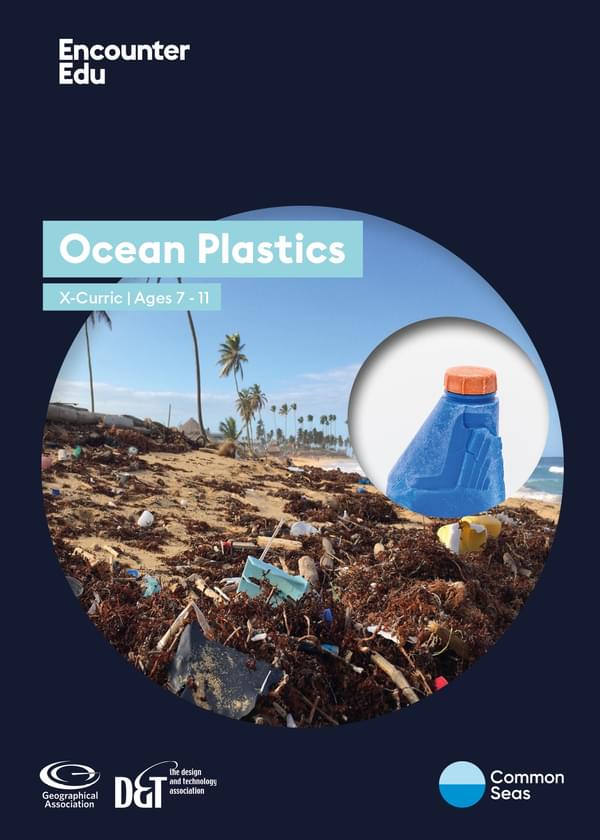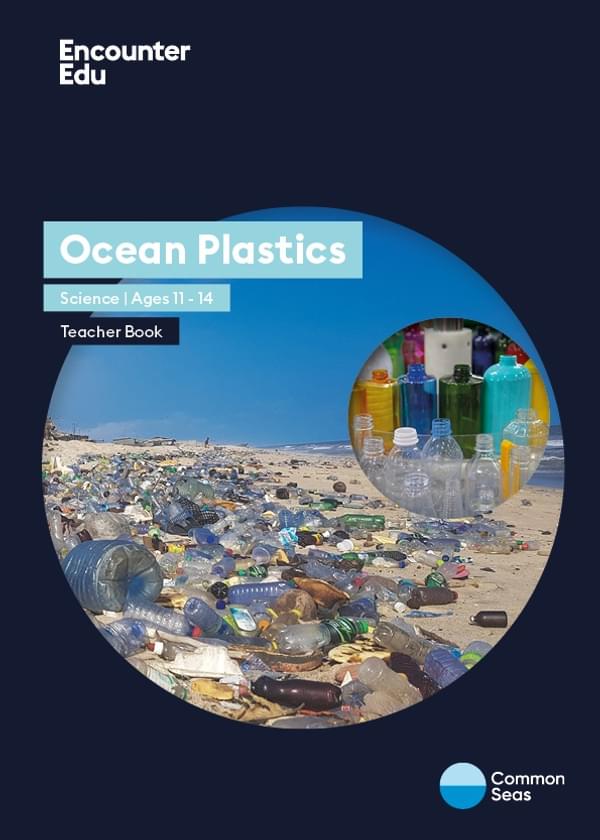Plastic threats
Plastic in the ocean is having a devastating effect on marine life. In this activity, you will learn about some of the impacts of marine plastic pollution and create a diorama, or poster, to use as an inspiration to reduce plastic use at home. This activity relates to science learning about human impact on the environment.
Ages 8+
45 minutes
(or longer!)
Part of:
Common Seas Ocean Plastics AcademyOverview
Find out just how much impact plastic pollution is having on marine life. There is more information on how ocean plastic harms marine life in the Find out more section as well as in the Student Sheets for each activity. Depending on the resources you have available you can either create a poster or a diorama.
To make a poster simply choose one of the animals listed in the Plastic threats information cards (downloadable from the What you'll need section) and use the information to create a visual display which shows how everyday carelessness and use of unnecessary plastic can harm ocean creatures.
The diorama activity described below guides students and families to create a more detailed view of the impact of plastic on the marine environment. Read through the steps below and have a look at the Plastic threats templates (downloadable from the What you'll need section), which will guide you through making your diorama.
As a warning, some of the imagery and facts relating to the impact of plastic on marine life may be distressing for younger children and teacher or parental discretion should be used.
The diorama activity steps below are just a guide, and feel free to use your own ideas and any materials to hand to achieve the objective of showing the impact of plastic pollution on marine life.
Activity steps
- For your diorama, you will need a cardboard box, about 40 cm wide by 60 cm long and 20 cm deep.
- A smaller box could be used, but you may need to shrink some of the templated examples of marine life and plastic pollution.
- Create the backing for your diorama. Use paper or paint to represent the sandy bottom, ocean, and blue sky. Cut and stick a piece of yellow or sandy-coloured backing paper to line the bottom of your box. Cut and stick pieces of blue backing paper to line the top and sides of the box to represent the sky.
- Then measure out a section of aluminium foil to go around the sides of your box to represent the ocean. Cut a wave pattern along the top of the foil, and then stick it in place.
- Add examples of marine life, plastic pollution and information cards. This can be done by either sticking, propping or hanging the cards within the box.
- Some of the examples will have tabs on them which can be folded back and stuck to the bottom of the ‘sea’, allowing them to be propped up.
- Other examples can be stuck to the backing. Depending on the example, these can be placed either in the sea, sky or resting on the waves.
- You can also hang examples from the top of the box. Just attach them to cotton thread and make a hole in the top of the box, feed the thread through and attach it to a paper clip.
- Dioramas are our favourite! We definitely need to see a picture of your amazing creation, and so does everyone else! Please share a photo on Instagram, or even a video of you describing what’s going on. Don’t forget to tag @commonseas when posting (and use the hashtag #SeaChampions), so we can share more widely as well. Thank you!
Examples of work


Further ideas
You can develop your understanding of the impact of plastic on the marine environment by using some of the Ocean Plastics Academy Teacher Resources. For ages 5-7, see the lesson What impact can plastics have?. Science and geography lessons for ages 7-11 are What impact can plastic have? Part one and Part two.
For older students, use the science lessons for ages 11-14, How does plastic affect the environment? and Plastics and bioaccumulation. For a geography focused lesson, use What is plastic and why is it a problem in the ocean?.
Safety guidance
- This activity involves plenty of cutting and punching holes so adult supervision and the use of child appropriate tools such as safety scissors is advised.
- When using waste plastic to create examples of marine plastic pollution ensure that this is washed thoroughly.
- If you are posting work on social media, this should be done via a parent, guardian or school account for children under the age of 13. Children over the age of 13 should still be supervised by an adult. Check out the Thinkuknow website for more guidance on online safety.
Brought to you by


Cross-curricular | Ages 5-7
Ocean Plastics
Ocean plastics ages 5-7 unit is a KS1 teacher resource that introduces students to the issue of plastic pollution. Students study materials, their properties and explores what happens to our plastic rubbish.

Cross-curricular | Ages 7-11
Ocean Plastics
Ocean Plastic ages 7-11 unit is a KS1 teacher resource that introduces students to the issue of plastic pollution. Students study materials, their properties and are inspired to enact change in their communities.

Science | Ages 11-14
Ocean Plastics
Ocean Plastics Science ages 11-14 unit is a KS3 teacher resource combining both biology and chemistry. Students discover the journey plastic takes from manufacture, use, and disposal into the ocean. Included are teacher resources that allow students to emulate real research conducted by The University of Plymouth.


